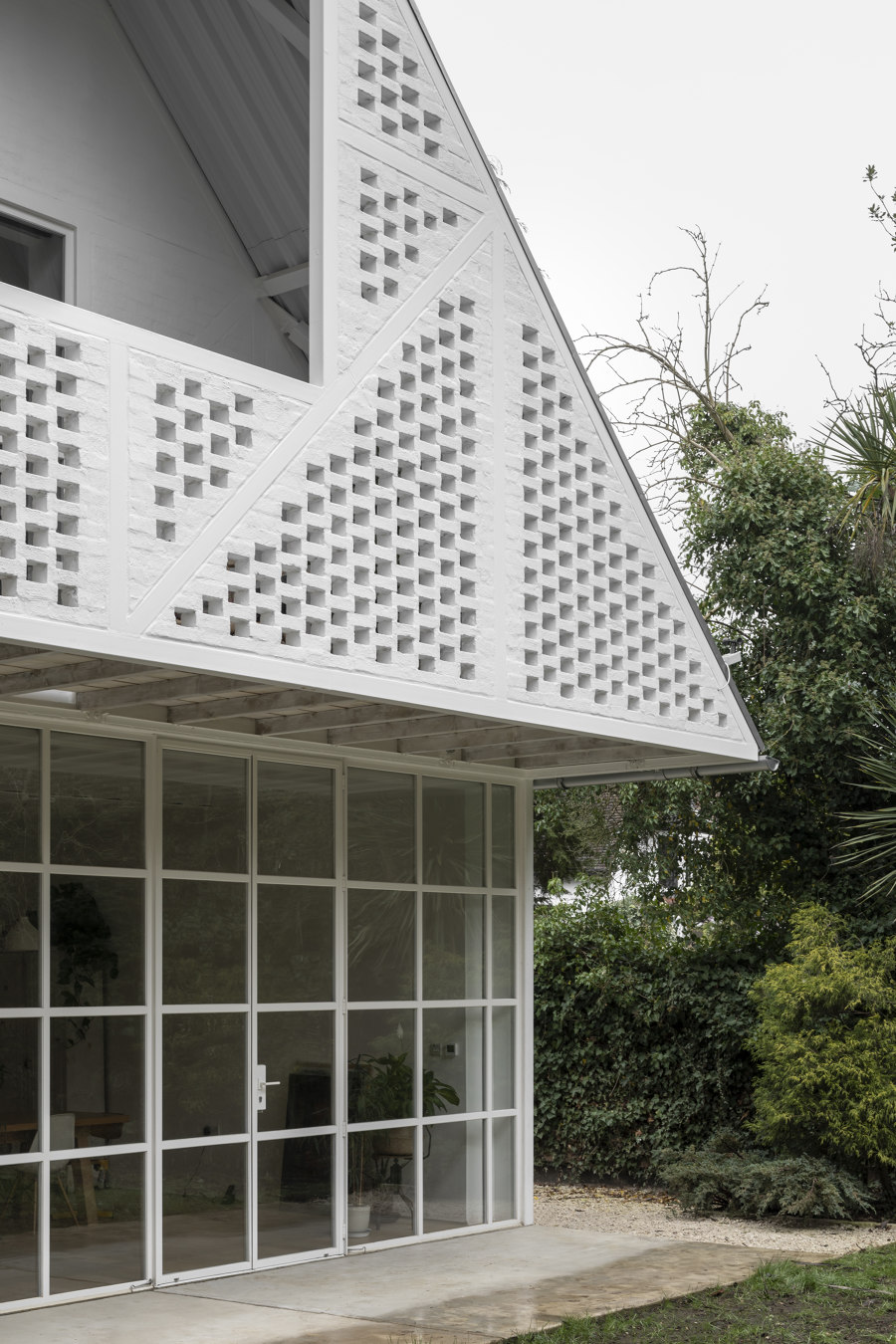
Fotógrafo: Johan Dehlin

Fotógrafo: Johan Dehlin

Fotógrafo: Johan Dehlin
Ditton Hill House is a new-build, two-storey detached house built on a suburban street in Surbiton. With its pitched roof and pure white walls, it might at first glance seem at odds with its neighbours in this leafy district of west London. However, its form and materialisation are strongly informed by the local vernacular, and its design has emerged from the careful orchestration of subtle references to it.
With its traditional A-frame elevation the house borrows the language of mock-Tudor ubiquitous in the suburbs, and turns it on its head by expressing it in a steel frame – the materiality of modernity. The inherent strength of the steel exoskeleton permitted a thinning of the structural steel, which helps to express the pitched form diagrammatically as if it were drawn by a child. In the garden elevation, Crittall-style glazing offers a contemporary twist on the leaded windows synonymous with the mock-Tudor genre. These materials are combined with slurried brick infill panels, another nod to mock-Tudor building techniques.
The whiteness of the exterior continues a long tradition of modern white villas and civic buildings which dates back to the 1930s. The Grade II-listed Art Deco masterpiece Surbiton train station by James Robb Scott became a constant reference point for the architects during the four year delivery process.
Designed for the founder of bohemian fashion brand Star Mela, the client’s brief was for a contemporary house with an industrial aesthetic, which would be much more than a simple minimalist open-plan box.
The route through the house is designed to offer a range of spatial experiences. You enter directly into the vertically proportioned triple-height entrance hall. This voluminous hall functions as an intermediary space – a sort of internal courtyard – so the materials are deliberately raw, with exposed blockwork walls and roughly-screeded concrete floors.
From the light and height of the entrance hall, you step down under the stairs into a darker hallway space beneath a heavyweight concrete soffit, before you move into the more domesticated spaces, arriving in the living room. Passing from the hallway into the living room, there is a dramatic change in spatial quality, from compression to expansiveness, as the ceiling height increases and panoramic rear windows provide an uninterrupted view of the garden.
The material palette becomes increasingly warmer, with timber floors underfoot and softer plaster walls acting as counterpoints to the steel roof and floor decks that run throughout the house. The exposed decks add texture to the interior palette and were seen as a modern interpretation of exposed Tudor timber beams.
Upstairs, bedrooms and bathrooms are housed within the “loft space”, which, at five metres in height and primarily lit from above, has an almost church-like peaceful quality.
Access to the garden was a priority of the client. On the upper floor the master bedroom opens onto an enclosed balcony, where she can enjoy views of the sky and trees.
Design Team:
Surman Weston
Project Architect: Percy Weston
Structural Engineer: Structure Workshop
Services Engineer: Synergy
Ecology Consultant: Astute ecology
Contractor: Wadey Builders
Metalwork Fabricator: Elite Metalcraft
Client: Amanda Winship

Fotógrafo: Johan Dehlin

Fotógrafo: Johan Dehlin

Fotógrafo: Johan Dehlin

Fotógrafo: Johan Dehlin

Fotógrafo: Johan Dehlin







